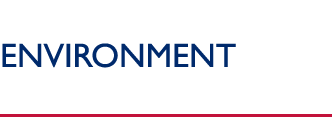 |
The Global Conservation Program
The Global Conservation Program (GCP) is a partnership between USAID and six leading U.S.-based nongovernmental organizations, which aims to conserve globally significant areas of biodiversity.
 |
USAID’s Global Conservation Program supports
partner organizations to implement site-based
conservation that contributes to human livelihoods,
while addressing the most pressing conservation
threats around the world.
|
This partnership began in 1999 and is now USAID's only global conservation initiative, complementing a wide array of USAID Mission-supported biodiversity activities around the world. GCP partner organizations implement site-based conservation programs that seek to contribute to human livelihoods, while addressing the most pressing conservation threats. These programs are designed to test innovative approaches to achieve greater conservation impact at multiple scales, from the community level to large landscapes and seascapes.
Since the program’s inception, GCP partners (African Wildlife Foundation, Conservation International, Enterprise Works/VITA, The Nature Conservancy, World Wildlife Fund and Wildlife Conservation Society) and USAID have supported conservation efforts in 29 biologically diverse sites and through several policy initiatives. Now in its second phase, GCP II currently supports partner activities in 17 sites throughout Africa, Asia and Latin America and the Caribbean.
Many GCP sites face immediate conservation threats such as wildlife poaching, logging, and mining. To address this, the GCP takes a “threats-based” approach to conserving land and seascapes around the world. This approach seeks to identify priority threats to biodiversity and link them to specific conservation actions in a logical and direct way. Appropriate site-specific conservation activities are then designed to mitigate these prioritized threats. Additionally, GCP projects apply the principles of adaptive management to monitor new and existing threats and respond appropriately and effectively.
Examples of GCP program activities include: community-based natural resources management; improved protected area management; integrated eco-regional land and seascape planning and management; enterprise-based conservation, including environmentally sound tourism; strengthened policy and legal frameworks for natural resources and conservation management; and community training and capacity-building in skill areas as diverse as business development skills, advocacy, and ecological monitoring. GCP partners strengthen local capacity by employing local personnel, organizations, and facilities to the maximum extent possible, and by facilitating collaboration with USAID and other organizations engaged in related activities. This GCP brochure (3.901MB PDF) provides additional details.
In addition to implementing site-based activities, the six GCP partners work together to conduct applied research and dialogue on topics of broad conservation interest. This collaborative, inter-institutional learning initiative aims to generate new conservation approaches, and to identify and share effective conservation practices.
The GCP is managed by USAID’s Washington DC-based Biodiversity Team, although it provides an easy and efficient mechanism for USAID Missions to undertake projects with GCP partners. USAID Missions and Bureaus can develop their own stand-alone agreements (called Associate Awards) with any of the six GCP partner organizations without repeating the competition process — as long as the Associate Award is consistent with the overall GCP partner program description. To date, more than 40 Associate Awards, totaling more than $110 million, have been granted to GCP partners. These programs are funded and managed primarily by USAID Missions.
Back to Top ^
|


